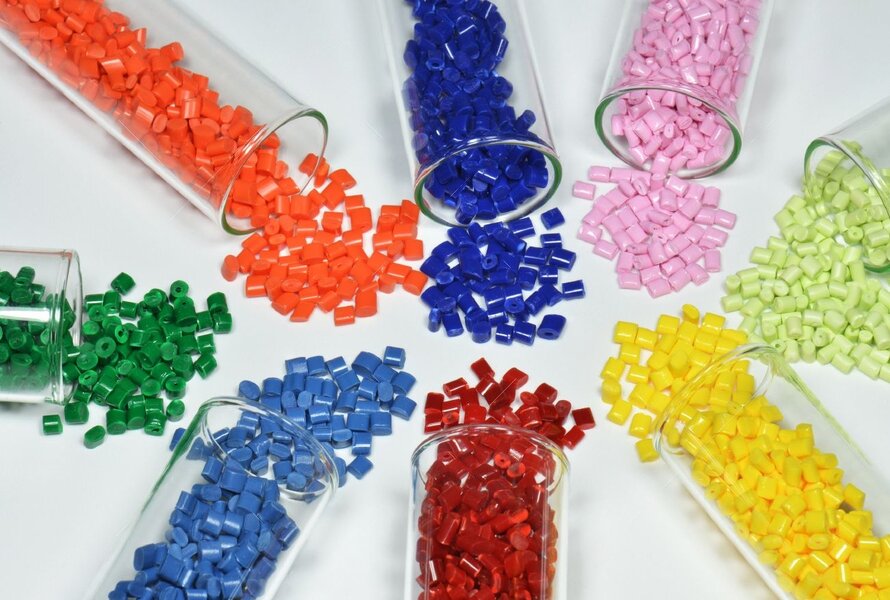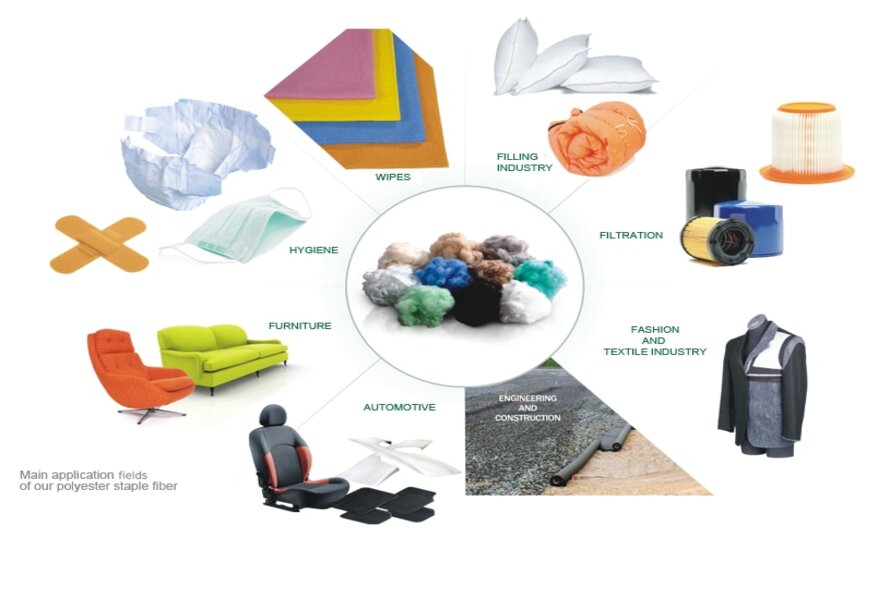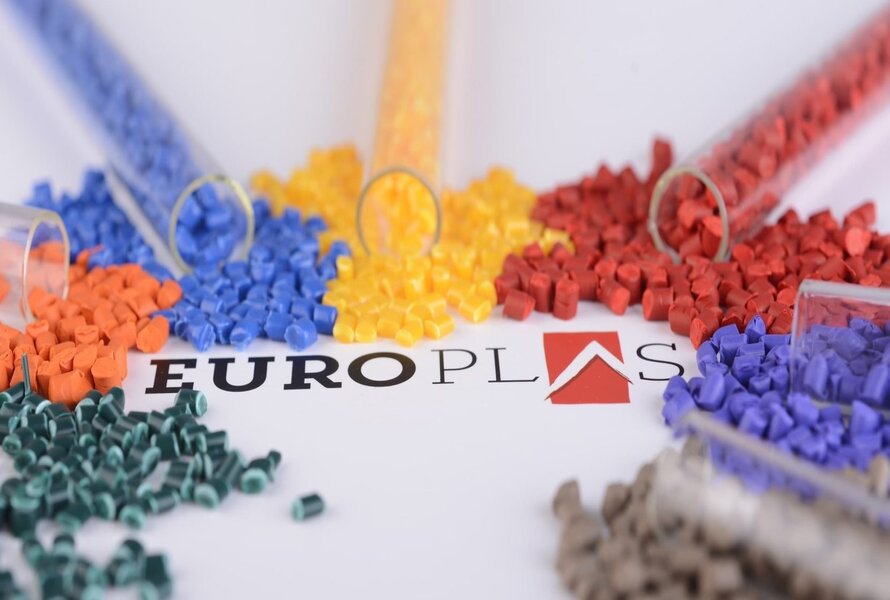Polyester is a synthetic polymer containing the ester functional group in every repeat unit of its main chain. It is one of the most widely used plastics in the world, especially for clothing and packaging. Polyester has many advantages, such as high strength, durability, water resistance, and low cost. However, it has some drawbacks, such as environmental impact, flammability, and low breathability.
1. The history of Polyester plastic
Research on polyester plastic began when W.H. Carothers discovered he could create fibers by fusing carboxylic acids and alcohols. But he gave up, and it took British scientists until 1941 to successfully get the patent on Terylene, the first polyester fiber.
In 1950, DuPont purchased the rights to Terylene and developed it into Dacron, one of today's most popular synthetic fibers. Mylar, a film used in electronics, photography, and aerospace, was made using polyester plastic. People manufacture about 70 million tons of polyester plastic annually, making it one of the most widely utilized polymers today.
Research on polyester plastic began when W.H. Carothers discovered he could create fibers by fusing carboxyl acids and alcohol
2. What is polyester plastic?
Esters are repeating pieces of polyester resin, a kind of polymer produced when an acid and an alcohol combine chemically. Polyethylene Terephthalate (PET) people used ethylene glycol to create, and carboxylic acid terephthalic acid is the most used polyester resin. PET may create a range of goods, including sheets, films, bottles, and fibers.
Polyester plastic may also be produced using other esters, such as polybutylene terephthalate (PBT), polyethylene naphthalate (PEN), or polycyclohexylene dimethyl terephthalate (PCT). These polyester types set themselves apart from PET regarding their properties and applications.
 Esters are repeating pieces of polyester resin, a kind of polymer produced when an acid and an alcohol combine chemically.
Esters are repeating pieces of polyester resin, a kind of polymer produced when an acid and an alcohol combine chemically.
3. Characteristics of Polyester Plastic
Numerous qualities of polyester plastic make it appropriate for a wide range of applications. Some examples of polyester characteristics are:
- High strength: Polyester plastic can sustain large forces without cracking. Additionally, it has a high modulus of elasticity, allowing it to recover its original form after being crushed or stretched.
- Durability: Polyester plastic is impact, wear, and abrasion resistant. Additionally, it has a low coefficient of friction, allowing it to move across other surfaces without leaving any marks.
- Resistance: Polyester plastic has high chemical resistance, including resistance to acids, bases, solvents, oils, and fats. It can avoid leakage or contamination since it is low permeability to gases and liquids. Polyester plastic is also resistant to moisture, UV radiation, heat, and cold.
- Recyclability: Polyester plastic may be turned into new goods or resources. Recycling polyester plastic helps reduce waste and conserves energy and greenhouse gas emissions.
Numerous qualities of polyester plastic make it appropriate for a wide range of applications.
4. Application of Polyester Plactics
For several businesses and areas, polyester plastic offers various advantages. Among these advantages are:
- Textiles: Fabrics for clothes, furniture, carpets, curtains, and other goods are often made from polyester plastic. Polyester fabrics offer several benefits compared to natural materials like cotton or wool. Polyester materials are more cost-effective, lighter, stronger, long-lasting, wrinkle- and stain-resistant, and colorfast. Additionally, polyester textiles may be combined with other fibers to provide a variety of textures and effects.
- Packaging: Containers for food, drinks, cosmetics, prescription drugs, and other items are also made of polyester plastic. Comparing polyester containers to glass or metal ones reveals various benefits. Lighter, less expensive, safer, more transparent, shatterproof, sealable, and recyclable are polyester containers. To meet various purposes, polyester containers may be molded into a variety of shapes and sizes.
- Automotive: Parts and components for automobiles, lorries, buses, and other vehicles are made from polyester plastic. Comparing polyester components to metal or rubber ones reveals various benefits. Parts made of polyester are more acoustically quiet, lighter, affordable, stronger, and more long-lasting. Polyester components may also be molded into intricate forms and patterns to enhance performance and aesthetics.
Medical gadgets and implants: Are also made of polyester plastic for this reason. Devices made of polyester offer some benefits over those made of ceramic or metal. The materials used in polyester products are biocompatible, non-toxic, non-allergenic, non-inflammatory, and immune-neutral. Polyester devices may be modified to have various mechanical and biological qualities to fit various applications.
 For several businesses and areas, polyester plastic offers various advantages.
For several businesses and areas, polyester plastic offers various advantages.
5. Melting Point of Polyester
The temperature at which polyester transitions from a solid to a liquid form is known as its melting point. The kind of polyester, its chemical makeup, crystallinity level, and molecule orientation all affect the material's melting point. Polyester's stiffness and aromatic content often raise the material's melting point. As polyester's aliphaticity and flexibility increase, its melting point decreases.
The most popular polyester, polyethylene terephthalate (PET), has a melting point of around 260°C (482°F). PET makes various things in factories, fabrics, films, and bottles. PET may also be altered by adding extra monomers or copolymers to create new types of polyesters with variable properties and melting points. For instance, the melting temperatures of polybutylene terephthalate (PBT), polyethylene naphthalate (PEN), and polycyclohexylene dimethylene terephthalate (PCT) are, respectively, 225°C (437°F), 270°C (518°F), and 290°C (554°F).
|
Polyester type
|
Melting point (°C)
|
|
Polyethylene terephthalate (PET)
|
260-265
|
|
Polybutylene terephthalate (PBT)
|
225-230
|
|
Polyethylene naphthalate (PEN)
|
270-275
|
|
Polycyclohexylene dimethyl terephthalate (PCT)
|
290-295
|
6. Melting Temperature of Polyester
The range of temperatures at which polyester may be melted and shaped into various shapes and forms is known as the material's melting temperature. Polyester has a melting temperature that differs from its melting point because of manufacturing factors such as flow velocity, pressure, and heating. Because it takes more energy to break through the intermolecular tensions and viscosity of the polymer, polyester often melts beyond its melting point.
Polyester's melting point may vary from 230°C to 270°C (446°F to 518°F), depending on its kind and composition. For instance, the melting points of PET, PBT, PEN, and PCT are between 240 and 260 degrees Celsius and 230 and 250 degrees Celsius, and 446 and 482, 482 and 518 degrees Fahrenheit, respectively.
|
Type of Polyester
|
Melting Temperature (°C)
|
|
Polyethylene terephthalate (PET)
|
260-280
|
|
Polybutylene terephthalate (PBT)
|
225-235
|
|
Polyethylene naphthalate (PEN)
|
270-280
|
|
Polycyclohexylene dimethyl terephthalate (PCT)
|
290-300
|
7. Conclusion
Polyester is a versatile plastic that has many applications in various industries. It has many benefits, such as durability, water resistance, and low cost. However, it has some drawbacks, such as environmental impact, flammability, and low breathability. Polyester can be recycled or biodegraded under certain conditions, but these processes have yet to be widely adopted or efficient. Therefore, using polyester responsibly and reducing its waste as much as possible is important.
8. EuroPlas is the world’s No. 1 filler masterbatch manufacturer
EuroPlas is a company that specializes in producing and exporting filler masterbatch, a material solution for plastic enterprises. Filler masterbatch is a polymer that contains ester bonds and can be used to reduce costs and improve plastic products' quality. EuroPlas has more than 15 years of experience in this field and has served thousands of customers in over 85 countries.
EuroPlas offers various types of filler masterbatch, such as bioplastic compound, color masterbatch, plastic additives, engineering plastic compound, and bio-filler. EuroPlas also provides tailor-made solutions for each customer’s specific needs and requirements. EuroPlas is the world’s No. 1 filler masterbatch manufacturer and a leader in the plastic materials market. You can learn more about EuroPlas and our products by visiting our website or blog.
 EuroPlas is the world’s No. 1 filler masterbatch manufacturer and a leader in the plastic materials market.
EuroPlas is the world’s No. 1 filler masterbatch manufacturer and a leader in the plastic materials market.
9. FAQs
9.1. Is polyester plastic eco-friendly?
If recycled correctly, polyester plastic might be environmentally good. Utilizing recycled polyester plastic reduces waste, greenhouse gas emissions, and energy consumption. On the other hand, if not recycled, polyester plastic may result in environmental issues, including littering, landfilling, or ocean contamination. Supporting recycling initiatives and correctly discarding polyester plastic items are so vital.
9.2. Is polyester plastic safe for human health?
Polyester plastic is safe for human health when used correctly and in compliance with set standards. Plastic made of polyester is non-toxic, non-allergenic, non-inflammatory, and non-immunogenic. However, certain types of polyester plastic could include fillers or chemicals that are harmful to ingest or breathe in. Therefore, it is essential to read the labels and certifications on polyester plastic products before using them.
9.3. How can I tell if a product is made of polyester plastic?
Look at the packaging or recycling symbol to determine whether a product is polyester plastic. The recycling symbol for polyester plastic is a triangle with the number 1 within. Under the recycling, the icon may also be the initials PET or PETE. A burn test is another tool for determining a product's polyester plastic composition. When polyester plastic burns, a golden flame, black smoke, and a nice aroma are generated.
9.4. How can I recycle polyester plastic products?
You must take the following steps to recycle polyester-based plastic products:
- Separate polyester plastic products from other types of garbage.
- Rinse the polyester plastic products to remove any sand or debris.
- Remove any labels or caps from the polyester plastic products.
- Crush or flatten the polyester plastic pieces to save space.
- Place the polyester-plastic objects in a bag or container for recycling.
- Take the recycling bin or bag to a recycling center or collection point.